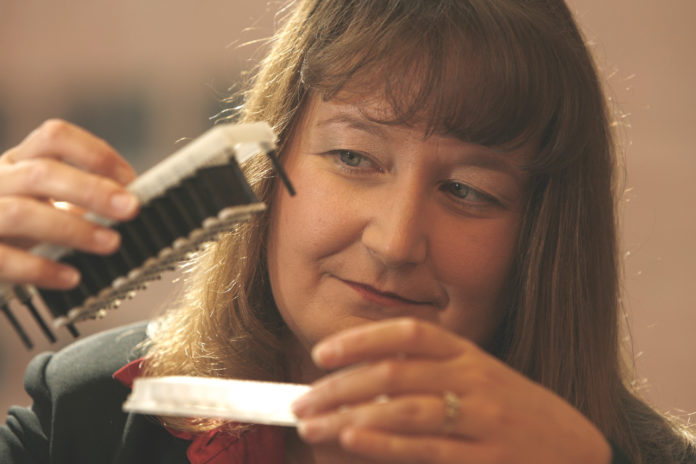Recent findings from the Oklahoma Medical Research Foundation have revealed molecular clues that will allow doctors to separate Sjogren’s syndrome patients into three distinct categories, allowing for more targeted treatment approaches.
OMRF Vice President of Clinical Affairs Judith James, M.D., Ph.D., said this ability to profile Sjogren’s patients for the first time will lead to improved patient selection for clinical trials and guide personalized treatment plans.
In Sjogren’s syndrome, immune cells attack moisture-producing glands, leading to painful dryness and decreased ability to produce tears or saliva. Common symptoms include severe dry eyes and dry mouth, as well as fatigue, arthritis and memory problems.
“A huge challenge with Sjogren’s is that there are no FDA-approved treatments to modify the disease process, only symptom treatments,” said James, who also holds the Lou C. Kerr Chair in Biomedical Research at OMRF. “This kind of molecular information can help us choose the right medications for the right patients. It can also help us design clinical trials that succeed in getting disease-modifying treatments on the market for patients in need.”
Sjogren’s may affect up to 4 million Americans, according to the Sjögren’s Syndrome Foundation. While its causes are not fully understood, environmental triggers, such as viral infections, are believed to contribute to the development of Sjögren’s in individuals who carry certain genetic risk factors for the disease.
James said their recent study aimed to better understand just how similar patients are or if certain molecules alter disease activity. What they discovered by investigating blood biomarkers and gene-expression profiles was that they can actually separate patients into three distinct categories, based on which parts of the immune system were affected.
“Before this study, everyone pretty much thought Sjogren’s patients have dry eyes, dry mouth, some joint pain and that they should all be treated the same way,” she said. “Now we know that isn’t the case.”
The findings were published in Rheumatology and were funded by the National Institute of Allergy and Infectious Diseases, the National Institute of Arthritis and Musculoskeletal and Skin Diseases, the National Institute of Dental and Craniofacial Research, and the National Institute of General Medical Sciences, all part of the National Institutes of Health.
Other OMRF researchers who contributed to the work were Joel Guthridge, Ph.D., Hua Chen, Ph.D., Rufei Lu, M.D., Ph.D., Rebecka Bourn, Ph.D., Melissa Munroe, M.D., Ph.D., Miles Smith, Ph.D., Eliza Chakravarty, M.D., Kathy Sivils, Ph.D., and Teresa Aberle.
This study was completed on behalf of the Autoimmunity Centers of Excellence (ACE) consortium. OMRF is one of only 10 ACE centers in the U.S.













